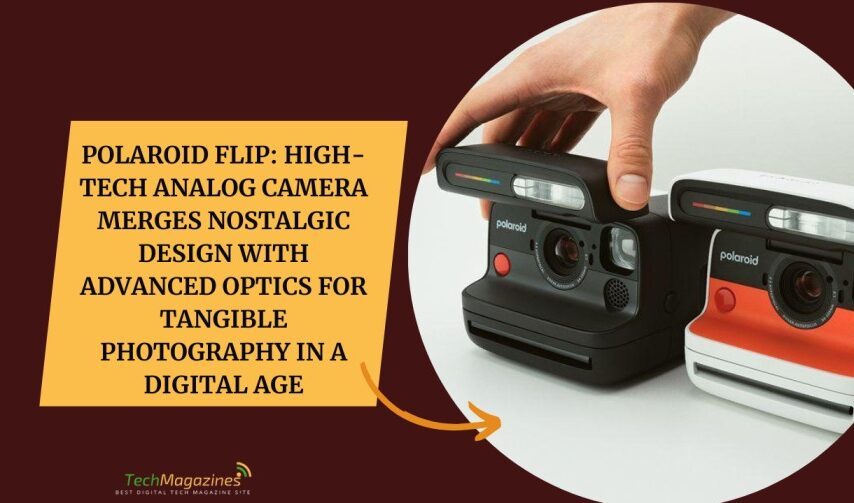Polaroid releases the Flip, a point-and-shoot instant camera that disguises modern optics beneath nostalgic design. It includes sonar autofocus, a hyperfocal 4-lens system, scene exposure warnings, and Polaroid’s most powerful flash—an unusually high-tech stack for analog output. The Flip implicitly critiques algorithm-mediated photography, favoring immediacy and embodiment over curation. It’s an argument for friction: that moments are better preserved when they’re lived directly, not filtered, stored, or optimized for engagement.
Smarter Focus, Stronger Flash: The Flip’s Feature Breakdown
The Polaroid Flip is built strong, with a lid that shuts tight to guard the camera like a soldier’s helmet. Eighty years of grit and invention have gone into it. This is the camera for folks who want to take good pictures without fuss.
It’s got a Hyperfocal 4-Lens System—four clear, clean lenses that shift with the distance of your subject. One at 0.65 meters. Another at 0.85. One more at 1.2, and the last at 2.5. They know what to do. They keep the image sharp, no matter what you’re shooting.
The Sonar Autofocus sees with sound. Sends out a wave, hears it back, and knows how far the subject stands. Picks the right lens. Focuses clean. Works even when the night is thick and black.
The flash is strong. Lives in the lid. It learns how far your subject is, then burns just bright enough. Lights up the dark, reaching out to 4.5 meters.
There’s a thing called Scene Analysis. When the shot is too bright or too dim, a red light flashes in the viewfinder. If you’re too close, a sign blinks on the lid. It doesn’t lie. It tells you what you need to know. So you can take the picture, and take it right.
Why the Polaroid Flip is a Love Letter to Physical Photos
The Polaroid Flip is not just a camera. It is a way back to the world. In a time filled with noise and glass screens, where people scroll and scroll and forget how to breathe, the Flip says stop. Look. Be here. It gives you eight chances to hold something real. Not eight hundred digital ghosts that vanish in the cloud or sink into your phone, forgotten. These are pictures you can touch. Pictures that last. The Flip doesn’t chase perfection. It waits for the moment. Then you press the red shutter button. It clicks. And you’ve caught life. That is enough.
Launch Details & Pricing
The Polaroid Flip will cost €219, $199.99, £199.99, or CNY 1699. Members get early access beginning from April 15. The Flip launches on polaroid.com April 29, and in stores on May 13. It works with Polaroid i-Type and 600 film. It charges with USB-C and comes with a neck strap. You can connect it to the Polaroid app via Bluetooth, adjusting the settings manually and controlling it from a distance. It has Double Exposure and Self-Timer modes, letting creators push their limits.
Final Words
In a world where we take thousands of pictures with our phones and rarely print them, the Polaroid Flip offers the real deal. It is not a mere throwback to the past; it is a declaration, sturdy and unpretentious. As others crop, retouch, and hunt for likes, you will find a real photograph in your hands. The Flip is Polaroid’s way of telling its users to take a moment to consider before capturing the moment.
It is not cheap to capture life at $200, but what is the price of getting your focus away from the digital world? Whether you are a movie buff or just do not want to charge your gadgets anymore, the Polaroid Flip will be around.







